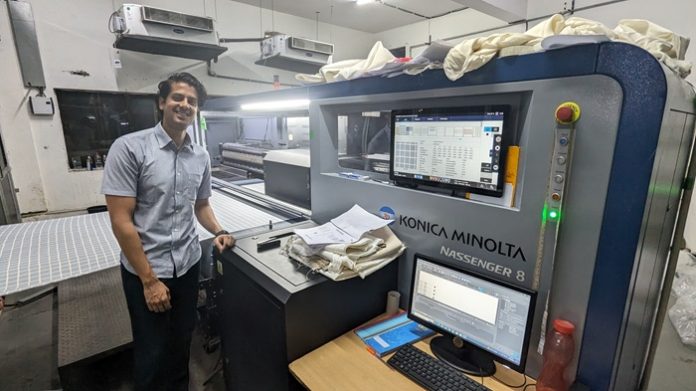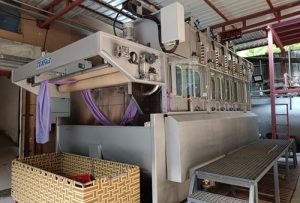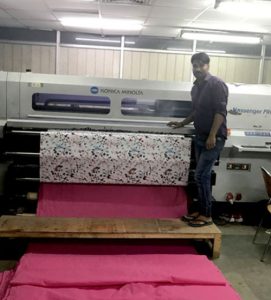
In the industry for over 45 years, Charu Digiprints, a subsidiary of Charu Apparel, is now one of the leading manufacturers and exporters of digitally printed and quilted home furnishing products and garments. Currently exporting to the United States, Canada, Australia, and European countries. Karan Khandelwal, director, of Charu Apparel and Charu Digiprints shared some of his insights into the digital textile printing industry.
Charu Digiprints possesses the latest machines in automated multi-head quilting and embroidery as well as digital printing. With a large range of computerized embroidery machines ranging in capacity from 6 to 34 heads, Khandelwal says these are capable to quilt and embroider the most intricate designs.
The company offers digital textile printing solutions using both reactive inks for direct printing and dye-sublimation printing including a Mimaki and Colorjet, and a pair of Konica Minolta’s Nassenger inkjet presses with 32 heads. Referring to these, Khandelwal points out, “The machines can print approximately 3,000 linear meters a day with flawless quality.”

Continuing the company’s legacy of exporting digitally printed products, Khandelwal joined the business in 2018 and initially focused on the domestic market. He brought all the processes – designing, padding, printing steaming, and washing in-house. The decision was driven by his belief that maintaining control over the entire production process is crucial for ensuring quality and consistency. He explains, “Attention to detail and consistency in quality is what we always look forward to – this is what sets us apart from our competition. The only thing we need to work on is maintaining the same quality level consistently.” He further adds, “From the time we receive the fabric, till its dispatch, it is processed within our facilities. This not only enables us to maintain utmost quality but also respect the secrecy of your designs at all times.” The entire pre and post-processing of digital printing, quilting, and embroidery is done in the company’s Noida factory.

Khandelwal has introduced a new retail brand of weighted blankets in India called – ‘Tucked In.’ A product already well-known in the American market, he saw the potential to create a similar demand in India. “It is slowly growing its market size in India and has a good future in the country.”
During our interaction, he emphasizes the importance of good designers in the team, who he considers the foundation for the digital textile printing process. He is quite proud of having assembled a good design team in the company that can ideate new designs and can also implement client designs that are explained to them with creativity and perfection in execution. “Our design team is always present to help our clients achieve the results they want, often to achieve even better results than what they had in mind when they came to us.”
Khandelwal speaks about the evolving landscape of Indian boutiques noting that they are increasingly focusing on quality, sustainability, and intricate design details – making them a significant client base for Charu Digiprints. These boutiques cater to niche markets whose customers value premium products and are willing to pay premium prices. He is keen to emphasized the growing sophistication of Indian consumers who are becoming more aware of the inputs and materials used in their clothing and are seeking sustainable options – a growing and valuable market for quality textile products.
Despite the success and growth of Charu Digiprints, its young director acknowledges the challenges faced by the industry – particularly the threat of counterfeit products. He emphasizes the importance of consumer education and awareness, reposing confidence in the ability of discriminating customers to choose quality over cheaper, counterfeit alternatives. While price-sensitive customers who prioritize cost over quality are both a reality and a concern, he remains optimistic. “As India’s middle class grows and becomes more aspirational, there is a significant opportunity to tap into this market segment by offering high-quality, sustainable products at competitive prices.”
Discussing the ways to maintain market relevance over the long term, Khandelwal says, R&D must be continuously invested in – this is a way to keep up with the recent trends, print technologies and the quality levels that can be achieved in the industry. “Stay relevant with new concepts and give the foremost importance to quality.”















